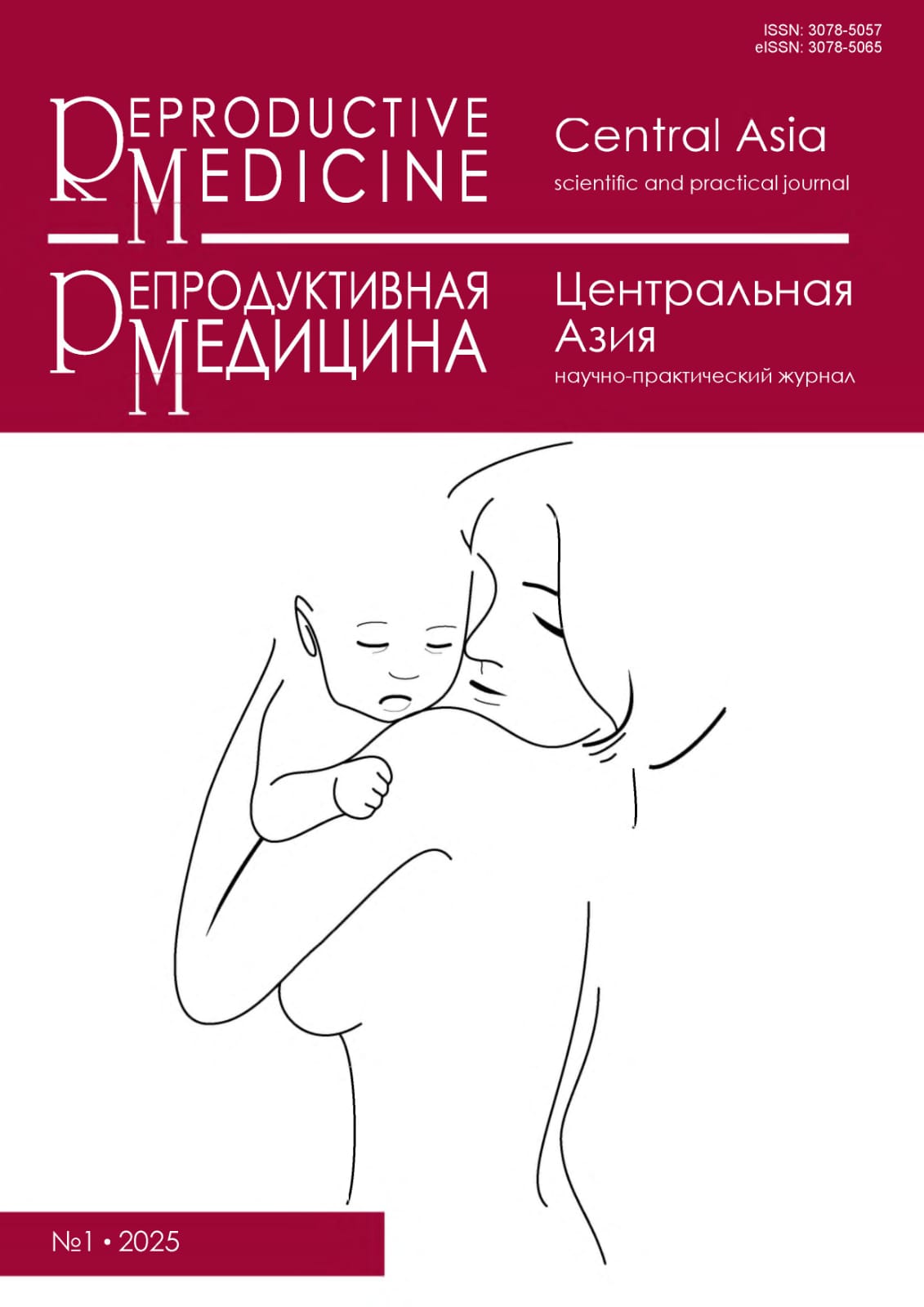Multifactorial analysis of the effect of albumin, creatinine, and TIMP-2 levels in acute kidney injury in pregnant women in the third trimester: Сlinical research
DOI:
https://doi.org/10.37800/RM.1.2025.455Keywords:
kidney, pregnant, albumin, creatinine, TIMP-2Abstract
Relevance: Acute kidney injury (AKI) in pregnant women in the third trimester is a serious clinical problem associated with a high risk of adverse outcomes for both mother and fetus. The development of AKI during this period may be due to various factors, including hypovolemia, preeclampsia, septic conditions, and obstetric complications. Currently, the diagnosis of AKI in pregnant women remains a difficult task since traditional biomarkers such as creatinine may not be informative enough due to physiological changes in kidney function during pregnancy. In this regard, new markers like TIMP-2 are of particular interest, which, in combination with other indicators, including albumin and creatinine levels, can provide a more complete picture of the degree of damage to renal tissue and the prognosis of the disease.
Thus, the present study has high clinical significance and is aimed at improving the diagnosis of AKI in pregnant women in the third
trimester, which may contribute to improving perinatal and maternal outcomes.
The study aimed to evaluate the prognostic significance of albumin, creatinine, and TIMP-2 levels in pregnant women in the third trimester
with acute kidney injury and develop a multifactorial model to improve the accuracy of acute kidney injury diagnosis and prediction.
Materials and Methods: A prospective study that included 32 pregnant women in the third trimester with confirmed AKI. The albumin, creatinine, and TIMP-2 levels were evaluated dynamically at different stages of gestation. A multifactorial regression analysis was performed,
considering age, concomitant extragenital diseases, and obstetric and gynecological history. The accuracy of the model was estimated using ROC curves.
Results: It was shown that increased creatinine and TIMP-2 significantly correlated with a more severe course of OP in pregnant women (p <
0.001), and low albumin levels were associated with unfavorable pregnancy outcomes (p = 0.04). ROC analysis gave AUC=0.85, indicating the developed model's high accuracy in predicting complications in this category of patients.
Conclusion: The integrated use of albumin, creatinine, and TIMP-2 significantly improves the accuracy of diagnosis and prediction of AKI
outcomes in pregnant women in the third trimester. The developed multifactorial model can be recommended for implementation in the
clinical practice of perinatal centers.
References
Ronco C, Bellomo R, Kellum JA. Acute kidney injury. Lancet. 2019;394(10212):1949-1964.
https://doi.org/10.1016/S0140-6736(19)32563-2
KDIGO. KDIGO Clinical Practice Guideline for Acute Kidney Injury [Internet]. 2012 Mar [cited: 2025 Mar 01]. Available from:
https://kdigo.org/wp-content/uploads/2016/10/KDIGO-2012-AKI-Guideline-English.pdf
Pickkers P, Darmon M, Hoste E, Joannidis M, Legrand M, Ostermann M, Prowle JR, Schneider A, Schetz M. Acute kidney injury in the critically ill: an updated review on pathophysiology and management. Intensive Care Med. 2021;47(8):835-850.
https://doi.org/10.1007/s00134-021-06454-7
Hoste EA, Bagshaw SM, Bellomo R, Cely CM, Colman R, Cruz DN, Edipidis K, Forni LG, Gomersall CD, Govil D, Honoré PM, Joannes-Boyau O, Joannidis M, Korhonen AM, Lavrentieva A, Mehta RL, Palevsky P, Roessler E, Ronco C, Uchino S, Vazquez JA, Vidal Andrade E, Webb S, Kellum JA. Epidemiology of acute kidney injury in critically ill patients: the multinational AKI-EPI study. Intensive Care Med. 2015;41(8):1411-1423.
https://doi.org/10.1007/s00134-015-3934-7
Yong K, Dogra G, Boudville N, Pinder M, Lim W. Acute kidney injury: controversies revisited. Int J Nephrol. 2011;2011:762634.
https://doi.org/10.4061/2011/762634
Pakula AM, Skinner RA. Acute Kidney Injury in the Critically Ill Patient: A Current Review of the Literature. J Intensive Care Med. 2016;31(5):319-324.
https://doi.org/10.1177/0885066615575699
Murray PT, Mehta RL, Shaw A, Ronco C, Endre Z, Kellum JA, Chawla LS, Cruz D, Ince C, Okusa MD; ADQI 10 workgroup. Potential use of biomarkers in acute kidney injury: report and summary of recommendations from the 10th Acute Dialysis Quality Initiative consensus conference. Kidney Int. 2014;85(3):513-521.
https://doi.org/10.1038/ki.2013.374
Hamza AH, Al-Bishri WM, Damiati LA, Ahmed HH. Mesenchymal stem cells: a future experimental exploration for recession of diabetic nephropathy. Ren Fail. 2017;39(1):67-76.
https://doi.org/10.1080/0886022X.2016.1244080
Donadio C. Body Composition Analysis Allows the Prediction of Urinary Creatinine Excretion and of Renal Function in Chronic Kidney Disease Patients. Nutrients. 2017;9(6):553.
https://doi.org/10.3390/nu9060553
Mizdrak M, Kumrić M, Kurir TT, Božić J. Emerging Biomarkers for Early Detection of Chronic Kidney Disease. J Pers Med. 2022;12(4):548.
Downloads
Published
How to Cite
Issue
Section
License
Copyright (c) 2025 The rights to a manuscript accepted for publication are transferred to the Journal Publisher. When reprinting all or part of the material, the author must refer to the primary publication in this journal.

This work is licensed under a Creative Commons Attribution-NonCommercial-NoDerivatives 4.0 International License.
The articles published in this Journal are licensed under the CC BY-NC-ND 4.0 (Creative Commons Attribution – Non-Commercial – No Derivatives 4.0 International) license, which provides for their non-commercial use only. Under this license, users have the right to copy and distribute the material in copyright but are not permitted to modify or use it for commercial purposes. Full details on the licensing are available at https://creativecommons.org/licenses/by-nc-nd/4.0/.




